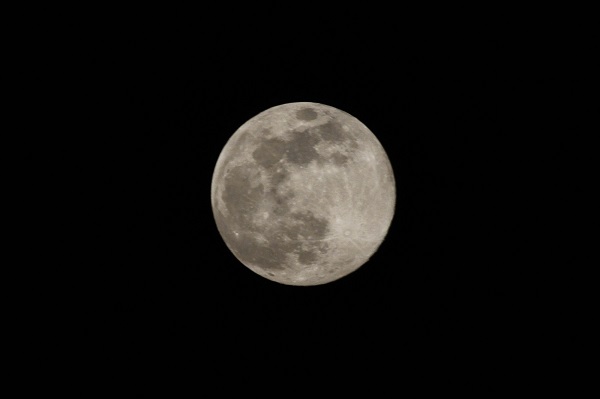London, (Asian independent) A giant impact could have formed the Moon more rapidly within hours, scientists have revealed, opening up a whole new range of possible starting places for the Moon’s evolution.
The Moon is thought to have formed following a collision 4.5 billion years ago between the young Earth and a Mars-sized object, called Theia.
Most theories create the Moon by gradual accumulation of the debris from this impact.
However, this has been challenged by measurements of lunar rocks showing their composition is like that of Earth’s mantle, while the impact produces debris that comes mostly from Theia.
Scientists from Durham University’s Institute for Computational Cosmology in the UK used the most detailed supercomputer simulations yet to reveal an alternative explanation for the Moon’s origin, with a giant impact immediately placing a Moon-like body into orbit around Earth.
The research team included scientists at NASA Ames Research Centre and the University of Glasgow, UK, and their simulation findings have been published in the Astrophysical Journal Letters.
“We went into this project not knowing exactly what the outcomes of these very high-resolution simulations would be. So, on top of the big eye-opener that standard resolutions can give you wrong answers, it was extra exciting that the new results could include a tantalisingly Moon-like satellite in orbit,” said Jacob Kegerreis, lead researcher of the study.
If much of the Moon formed immediately following the giant impact, then this could also mean that less became molten during formation than in the standard theories where the Moon grew within a debris disk around Earth.
Depending upon details of the subsequent solidification, these theories should predict different internal structures for the Moon.
“This formation route could help explain the similarity in isotopic composition between the lunar rocks returned by the Apollo astronauts and Earth’s mantle,” Vincent Eke, co-author of the study.
Furthermore, they found that even when a satellite passes so close to the Earth that it might be expected to be torn apart by the “tidal forces” from Earth’s gravity, the satellite actually can not only survive but also be pushed onto a wider orbit, safe from future destruction.








